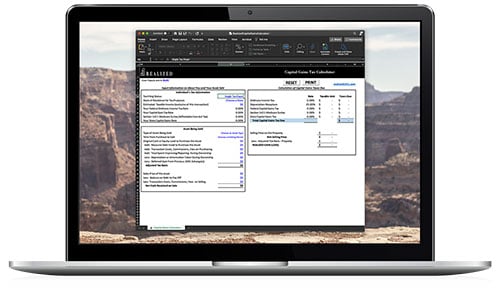
Selling an investment property can trigger a substantial capital gains tax bill—a reality that often surprises real estate owners. But under certain IRS-recognized conditions, reinvesting the proceeds into another qualifying investment can offer the opportunity to defer or even reduce this tax exposure. Let’s look at how this works, the strategies available, and key considerations for investors seeking.
Understanding Capital Gains Tax on Real Estate
You incur a capital gain when you sell a property for more than your adjusted basis (original purchase price plus capital improvements minus depreciation). This gain is typically be taxed at the federal level—typically at 15% or 20%, depending on income—and may also be subject to state taxes and the 3.8% Net Investment Income Tax (NIIT).
The tax bill can be significant for long-time property owners, especially those who’ve depreciated the asset. Fortunately, reinvestment strategies exist that can offer relief.
The 1031 Exchange: The Primary Tool
One of the more commonly used approaches to defer capital gains tax is the Section 1031 Exchange.
This IRS-recognized strategy allows you to sell an investment property and reinvest the full proceeds into a qualified like-kind replacement property—deferring capital gains, depreciation recapture, and other taxes.
To qualify, the exchange must follow strict rules:
- Both properties must be held for investment or business use.
- The replacement property must be identified within 45 days of the sale.
- The new property must be purchased within 180 days of the sale.
- All equity and debt must be reinvested.
When structured in accordance with IRS rules, a 1031 Exchange may allow for indefinite deferral of capital gains tax. In some cases, if the replacement property is held until death, it may receive a step-up in basis for heirs under current tax law—eliminating the deferred gain.
What About Partial Reinvestment and “Boot” Considerations?
If you reinvest only part of the proceeds or fail to replace all the debt, the portion not reinvested (referred to as "boot") may be subject to capital gains tax. For example, if you only reinvest $100,000 of the $150,000 in proceeds from the sale, the remaining $50,000 would be considered boot and could be taxed at the ordinary income rate. Even with partial reinvestment, the portion that is properly reinvested can still qualify for tax deferral.
To help facilitate the exchange in accordance with IRS requirements, it is important to engage a qualified intermediary and maintain accurate documentation throughout the process.
Other Reinvestment Options
While a 1031 Exchange is one of the more commonly used tools for tax deferral, it is not the only reinvestment option. Depending on your objectives and timeline, the following strategies may also be relevant:
- Qualified Opportunity Zones (QOZs): Investors can roll capital gains into a Qualified Opportunity Fund (QOF) to defer tax until December 31, 2026, and potentially eliminate gains on the new investment if held for 10+ years. QOZs offer a way to invest in low-income or underdeveloped areas, with the potential for tax benefits. However, QOZ eligibility rules are strict, and long holding periods may limit liquidity or portfolio flexibility.
- Delaware Statutory Trusts (DSTs): DSTs qualify for 1031 treatment and allow passive reinvestment into institutional-grade real estate, such as multi-family properties or commercial assets. DSTs offer a passive ownership model, often appealing to investors looking to reduce property management responsibilities while maintaining tax-deferred treatment. Do note that DSTs are illiquid, involve lack of control, and carry risks tied to real estate market performance and sponsor management.
- Structured Installment Sales: Reinvesting via installment sales allows the gain to be spread over multiple tax years, depending on the sale structure. This option can be particularly useful for sellers who don’t want to reinvest all proceeds at once but still want to manage tax exposure across a longer period. Be aware that income may vary by year, and interest or recapture taxes may apply depending on the agreement structure.
Final Thoughts
While it is possible to reinvest proceeds from the sale of an appreciated property in a way that defers capital gains tax, doing so requires careful planning, adherence to IRS rules, and a well-structured strategy..
Tax deferral strategies carry inherent risks and may not be appropriate for all investors. There is no guarantee that reinvestment will produce desired financial or tax outcomes, however, with careful planning, selling an appreciated asset doesn’t have to end your tax-efficient investment journey—it may be the beginning of your next one.
The tax and estate planning information offered by the advisor is general in nature. It is provided for informational purposes only and should not be construed as legal or tax advice. Always consult an attorney or tax professional regarding your specific legal or tax situation.
Article written by: Story Amplify. Story Amplify is a marketing agency that offers services such as copywriting across industries, including financial services, real estate investment services, and miscellaneous small businesses.


